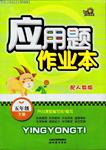题目内容
【题目】In the toys section, I noticed a small boy of about five years old, 【1】(press) a doll against his chest. He kept on touching the hair of the doll and looked very sad. I wondered who he wanted to give the doll 【2】. So I walked towards him and asked him all about it.
"It is the doll【3】my sister loved most and wanted so much for this Christmas. She was so sure that Santa Claus would bring it to her."
I told him not to worry. However, he 【4】(reply) sadly, "No, Santa Claus cannot bring it to【5】she is now. I'll have to give the doll to my mother so that she can give it to her when she goes there."
His eyes were filled with【6】(sad) while saying this.
"My sister【7】(go) to be with God. Daddy said that Mommy will also join God very soon, so I think that she can bring the doll with【8】to give it to my sister."
My heart almost stopped beating【9】(whole). The little boy looked up at me and said, "I told Daddy to tell Mommy not to go yet. I asked her to wait【10】I come back from the store."
【答案】
【1】pressing
【2】to
【3】that/ which
【4】replied
【5】where
【6】sadness
【7】has gone
【8】her
【9】wholly
【10】until
【解析】这篇小短文写的是作者在玩具区看到一个大约五岁的小男孩抚摸着胸前玩具娃娃的头发,作者好奇上前询问得知,这个玩具娃娃是小男孩想送给和上帝在一起的妹妹的圣诞礼物,但圣诞老人无法送达,爸爸告诉他,妈妈很快就会去那里把礼物带给妹妹。
【1】考察现在分词,小男孩和press构成主动关系,使用现在分词的形式。故填pressing 。
【2】考察固定搭配,此句wondered后面是who引导的宾语从句。give something to somebody是一个固定搭配。在句中who作to的宾语。故填to。
【3】考察强调句型,it is/was+被强调成分that/who其他成分。本题强调宾语。故填that。
【4】考察时态,动作发生在过去,故用一般过去式。
【5】考察从句,“bring something to...”意为“把某物带到某地,”to后面应该接宾语,此处是宾语从句,“where she is now”,意为“她现在所在的地方。”意思是圣诞老人不可能把礼物带到他所在的地方,故填where。
【6】考察介词,介词with后面要接名词,故填sadness 。
【7】 考察现在完成时,recently与现在完成时连用 ,故用现在完成时。故填has gone.
【8】考察宾语,做with的宾语,用宾格,故应该是her。
【9】考察副词修饰动词做状语,应用whole的副词形式修饰stopped beating 。
【10】考察连词辨析。由句意可知是缺until,直到我从商店回来。

 心算口算巧算一课一练系列答案
心算口算巧算一课一练系列答案 应用题作业本系列答案
应用题作业本系列答案【题目】请认真阅读下列短文, 并根据所读内容在文章后表格中的空格里填入一个最恰当的单词。注意: 每个空格只填1个单词。请将答案写在答题纸上相应题号的横线上。
How Technology Can Help Language Learning
Intelligence, according to Howard Gardner, is of eight types—verbal-linguistic, logical-mathematical, musical-rhythmic, visual-spatial, bodily-kinesthetic, interpersonal, intrapersonal, and naturalistic. This is the first in a series of posts that explore and understand how each of the above forms of intelligence is affected by technology-mediated education.
Verbal-linguistic Intelligence involves sensitivity to spoken and written language, the ability to learn languages, and the capacity to use language to accomplish goals. Such intelligence is developed by three specific activities: reading, writing and interpersonal communication—both written and oral. The traditional tools that have been used to efficiently develop verbal/linguistic intelligence—textbook, pencil, and paper—are giving way to technology in many schools. E-books, Internet lesson plans, online assignments and word processing software, or a subset of the above, are now common in schools. Technology allows addition of multisensory (多种感觉的) elements that provide meaningful contexts to help comprehension, thus expanding the learning ground of language and linguistics.
Research into the effect of technology on the development of the language and literacy skills vis-à-vis reading activities of children has offered evidence for favorable effects of digital-form books. A study shows that digital reading materials have become common in developing countries in early childhood classrooms to support engagement in storybooks while enhancing the emergent literacy (早期读写能力) among children. E-books are also being increasingly used to teach reading among beginners and children with reading difficulties.
Technology can be used to improve reading ability in many ways. It can enhance (加强) and sustain the interest levels for children by allowing immediate feedback on performance and providing added practice when necessary. Recent research shows that students are able to improve their sight word vocabulary, fluency, and comprehension through computer-based reading.
Technology can also help in improvement of writing skills. Word processing software promotes not only composition but also editing and revising in ways that streamline the task of writing. Desktop publishing and web-based publishing allow the work to be taken beyond the classroom into a virtual world that allows more constructive interactions.
Technology enhanced oral communication is indeed useful in that it allows students from remote locations, or from all over the world to communicate orally through video and audio conferencing tools. For example, students of languages in Australian universities overcome the problem of insufficient contact with native language speakers by using online audio and video tools that allow the development of aural, vocal and visual-cognition skills that are important in verbal and linguistic education. Oral group discussions in the form of video conferencing can help non-native speakers of a language with natural language negotiation and cultural intonations in ways that have not been possible due to geographic isolation.
Computer definitely aided language learning and computer mediated communication enhance teaching and learning experiences in the areas of linguistics and language intelligence. Although there have not been comprehensive studies on the use of technologies to aid K-12 English-language learners, there have been many individual computer programs and other technologies that accelerate the acquisition of phonics, vocabulary, fluency, and reading-comprehension skills and other language building blocks.
Title: How Technology Can Help Language Learning
Paragraph outline | Detailed information |
Brief introduction to Verbal-linguistic Intelligence | ●Howard Gardner thinks that intelligence is of eight types, 【1】________ from verbal-linguistic to naturalistic intelligence. ●Verbal-linguistic Intelligence, 【2】________ of three aspects, is developed by three specific activities. ●Technology is 【3】_______ traditional tools used to develop verbal/linguistic intelligence efficiently. ●The learning ground of language and linguistics has been 【4】_______ by adding multisensory elements to language learning. |
Effects on language and literacy skills | Digital reading materials have been used to help children in developing countries get 【5】________ in storybooks, enhancing the emergent literacy among them. |
Effects on reading ability | Technology can enhance and sustain children’s interest levels by providing immediate feedback and extra practice. |
Effects on writing skills | Technology allows our work to be taken in a virtual world with moreconstructive【6】________. |
Effects on oral communication | Technology allows students to communicate orally through video and audio conferencing tools【7】________ geographic isolation. |
Conclusion | ●There is no【8】________ that technology enhances teaching and learning experiences concerning linguistics and language intelligence. ●Although there is a 【9】_______ of comprehensive studies on the use of technologies to aid K-12 English-language learners, there have been other technologies that【10】________ the acquisition of language building blocks. |
